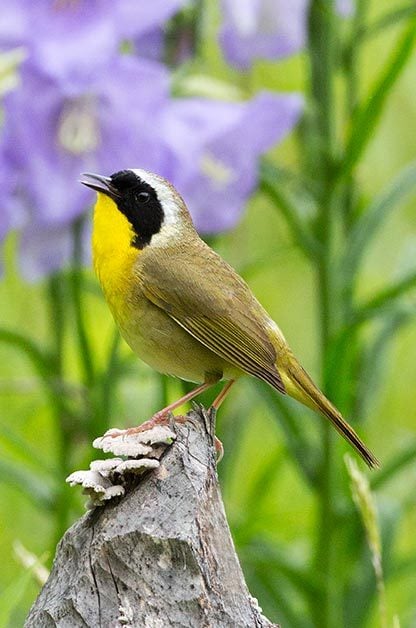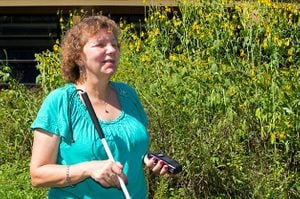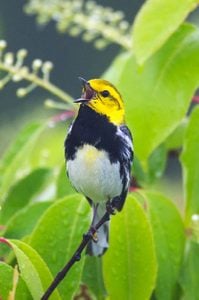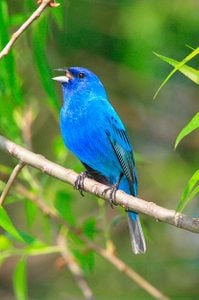Identifying Birds by Their Song
Updated: Feb. 08, 2024

Did you know that simply hearing a bird counts as an ID? For visually impaired people who are beginning birding, bird calls are a natural place to start.
Donna Posont has been birding for only about five years. She can’t see the birds, but when asked how many birdsongs she knows, she responds with a chuckle, “More than 100, but less than 200.” She’s learned the songs by listening to CDs and recording her own samples out in the field, which she’ll analyze later until she comes up with an ID.

It all started for Donna when she worked at a summer camp for blind children. On the hunt for activities beyond canoeing and arts and crafts, she took an interest in learning about birds.

“Birding is not really a field that’s been open to blind people,” Donna notes. “Outside, I would be hearing woodpeckers and other things, but I didn’t know what I was experiencing. I decided to go back to school to learn about it and teach it to the blind. I wanted to find something that we could learn as blind people and be successful.”
Eventually, Donna helped to establish the Birding by Ear and Beyond program at the University of Michigan-Dearborn. The project’s mission is to use birding to build confidence and improve mobility skills for blind people. They just happen to have a lot of fun and get out in nature, too!
Shared Successes
In Massachusetts and New Hampshire, the Lowell Association for the Blind has teamed up with Mass Audubon for the last 13 years to offer semi-annual bird walks. Bill Gette, a sighted birding-by-ear enthusiast at Mass Audubon, coordinates the field trips for the blind participants. The bird walks are the Lowell group’s best-attended events of the year, says Elizabeth Cannon, executive director.
“It’s so great to have people who are willing to help,” Elizabeth says. “We’re constantly looking for ways to get our participants outside.”
Some participants have been visiting Mass Audubon for so many years on these trips that they naturally pick up on the songs. Elizabeth says a few even travel to enjoy the birds on their own when they can. It’s testament to the fact that birds can make admirers out of just about anyone.
The Bigger Picture
Some would argue that one of the most important parts of bird-watching doesn’t involve sight, or even sound. If you’ve been on a group birding trip or even exchanged pleasantries with a stranger about birds in the park, perhaps you agree. It’s about camaraderie. It’s about being outside, experiencing and sharing the world around you. Donna believes that the more we learn about nature, the more we’ll want to take care of it. And you don’t need sight for that.

6 TIPS TO BECOMING A BETTER EAR BIRDER
- Know the difference between a song and a call. Birds sing to impress mates and claim territory, and they use calls to communicate. One may sound very different from the other. Try to learn both.
- Start small. Begin by learning the songs of the birds that come to your feeders. Spend time in your backyard with them. As you get better, go to a local park; keep widening your range.
- Take notes. Write down what the birds’ songs sound like to you. That will help you connect the bird with its sound when you’re out in the field.
- Use an app. Birders give Larkwire rave reviews. This is a game-based learning system for mastering birdsongs. It’s fun for beginners and advanced birders. Download it through iTunes or as a web-based computer app at larkwire.com.
- Visit Birds & Blooms’ YouTube channel. We just launched a series of birdsong video quizzes. Listen to the song and try to guess which bird is singing. There are hints if you get stuck. Check them out at youtube.com/birdsandblooms.
- Get outside with an experienced ear birder. A lot of guides and trip leaders at bird festivals have been birding for years and excel at calling out the birds they hear. Don’t be shy about asking them what they’re listening for.




















